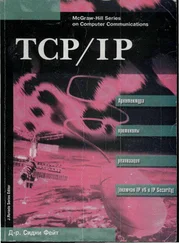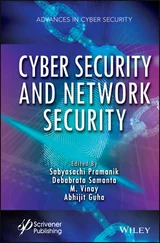One of the first things the security engineer needs to do when tackling a new problem is to identify the likely opponents. Although you can design some specific system components (such as cryptography) to resist all reasonable adversaries, the same is much less true for a complex real-world system. You can't protect it against all possible threats and still expect it to do useful work at a reasonable cost. So what sort of capabilities will the adversaries have, and what motivation? How certain are you of this assessment, and how might it change over the system's lifetime? In this chapter I will classify online and electronic threats depending on motive. First, I'll discuss surveillance, intrusion and manipulation done by governments for reasons of state, ranging from cyber-intelligence to cyber-conflict operations. Second, I'll deal with criminals whose motive is mainly money. Third will be researchers who find vulnerabilities for fun or for money, or who report them out of social conscience – compelling firms to patch their software and clean up their operations. Finally, I'll discuss bad actors whose reasons are personal and who mainly commit crimes against the person, from cyber-bullies to stalkers.
The big service firms, such as Microsoft, Google and Facebook, have to worry about all four classes of threat. Most firms and most private individuals will only be concerned with some of them. But it's important for a security engineer to understand the big picture so you can help clients work out what their own threat model should be, and what sort of attacks they should plan to forestall.
Governments have a range of tools for both passive surveillance of networks and active attacks on computer systems. Hundreds of firms sell equipment for wiretapping, for radio intercept, and for using various vulnerabilities to take over computers, phones and other digital devices. However, there are significant differences among governments in scale, objectives and capabilities. We'll discuss four representative categories – the USA and its allies, China, Russia and the Arab world – from the viewpoint of potential opponents. Even if spies aren't in your threat model today, the tools they use will quite often end up in the hands of the crooks too, sooner or later.
Just as everyone in a certain age range remembers where they were when John Lennon was shot, everyone who's been in our trade since 2013 remembers where they were when they learned of the Snowden revelations on Friday 7th June of that year.
I was in a hotel in Palo Alto, California, reading the Guardian online before a scheduled visit to Google where I'd been as a scientific visitor in 2011, helping develop contactless payments for Android phones. The headline was ‘NSA Prism program taps in to user data of Apple, Google and others’; the article, written by Glenn Greenwald and Ewen MacAskill, describes a system called Prism that collects the Gmail and other data of users who are not US citizens or permanent residents, and is carried out under an order from the FISA court [818]. After breakfast I drove to the Googleplex, and found that my former colleagues were just as perplexed as I was. They knew nothing about Prism. Neither did the mail team. How could such a wiretap have been built? Had an order been served on Eric Schmidt, and if so how could he have implemented it without the mail and security teams knowing? As the day went on, people stopped talking.
It turned out that Prism was an internal NSA codename for an access channel that had been provided to the FBI to conduct warranted wiretaps. US law permits US citizens to be wiretapped provided an agency convinces a court to issue a warrant, based on ‘probable cause’ that they were up to no good; but foreigners could be wiretapped freely. So for a foreign target like me, all an NSA intelligence analyst had to do was click on a tab saying they believed I was a non-US person. The inquiry would be routed automatically via the FBI infrastructure and pipe my Gmail to their workstation. According to the article, this program had started at Microsoft in 2007; Yahoo had fought it in court, but lost, joining in late 2008; Google and Facebook had been added in 2009 and Apple finally in 2012. A system that people thought was providing targeted, warranted wiretaps to law enforcement was providing access at scale for foreign intelligence purposes, and according to a slide deck leaked to the Guardian it was ‘the SIGAD 1most used in NSA reporting’.
The following day we learned that the source of the story was Edward Snowden, an NSA system administrator who'd decided to blow the whistle. The story was that he'd smuggled over 50,000 classified documents out of a facility in Hawaii on a memory stick and met Guardian journalists in Hong Kong [819]. He tried to fly to Latin America on June 21st to claim asylum, but after the US government cancelled his passport he got stuck in Moscow and eventually got asylum in Russia instead. A consortium of newspapers coordinated a series of stories describing the signals intelligence capabilities of the ‘Five Eyes’ countries – the USA, the UK, Canada, Australia and New Zealand – as well as how these capabilities were not just used but also abused.
The first story based on the leaked documents had actually appeared two days before the Prism story; it was about how the FISA court had ordered Verizon to hand over all call data records (CDRs) to the NSA in February that year [815]. This hadn't got much attention from security professionals as we knew the agencies did that anyway. But it certainly got the attention of lawyers and politicians, as it broke during the Privacy Law Scholars' Conference and showed that US Director of National Intelligence James Clapper had lied to Congress when he'd testified that the NSA collects Americans' domestic communications ‘only inadvertently’. And what was to follow changed everything.
On June 21st, the press ran stories about Tempora, a program to collect intelligence from international fibre optic cables [1201]. This wasn't a complete surprise; the journalist Duncan Campbell had described a system called Echelon in 1988 which tapped the Intelsat satellite network, keeping voice calls on tape while making metadata available for searching so that analysts could select traffic to or from phone numbers of interest [375, 376] (I'll give more historical background in section 26.2.6). Snowden gave us an update on the technology. In Cornwall alone, 200 transatlantic fibres were tapped and 46 could be collected at any one time. As each of these carried 10Gb/s, the total data volume could be as high as 21Pb a day, so the incoming data feeds undergo massive volume reduction , discarding video, news and the like. Material was then selected using selectors – not just phone numbers but more general search terms such as IP addresses – and stored for 30 days in case it turns out to be of interest.
The Tempora program, like Echelon before it, has heavy UK involvement. Britain has physical access to about a quarter of the Internet's backbone, as modern cables tend to go where phone cables used to, and they were often laid between the same end stations as nineteenth-century telegraph cables. So one of the UK's major intelligence assets turns out to be the legacy of the communications infrastructure it built to control its nineteenth-century empire. And the asset is indeed significant: by 2012, 300 analysts from GCHQ, and 250 from the NSA, were sifting through the data, using 40,000 and 31,000 selectors respectively to sift 600m ‘telephone events’ each day.
One of the applications running on top of Tempora was Muscular. Revealed on October 30th, this collected data as it flowed between the data centres of large service firms such as Yahoo and Google [2020]. Your mail may have been encrypted using SSL en route to the service's front end, but it then flowed in the clear between each company's data centres. After an NSA PowerPoint slide on ‘Google Cloud Exploitation’ was published in the Washington Post – see figure 2.1—the companies scrambled to encrypt everything on their networks. Executives and engineers at cloud service firms took the smiley as a personal affront. It reminded people in the industry that even if you comply with warrants, the agencies will also hack you if they can. It made people outside the industry stop and think: Google had accreted so much access to all our lives via search, mail, maps, calendars and other services that unrestricted intelligence-service access to its records (and to Facebook's and Microsoft's too) was a major privacy breach.
Читать дальше











